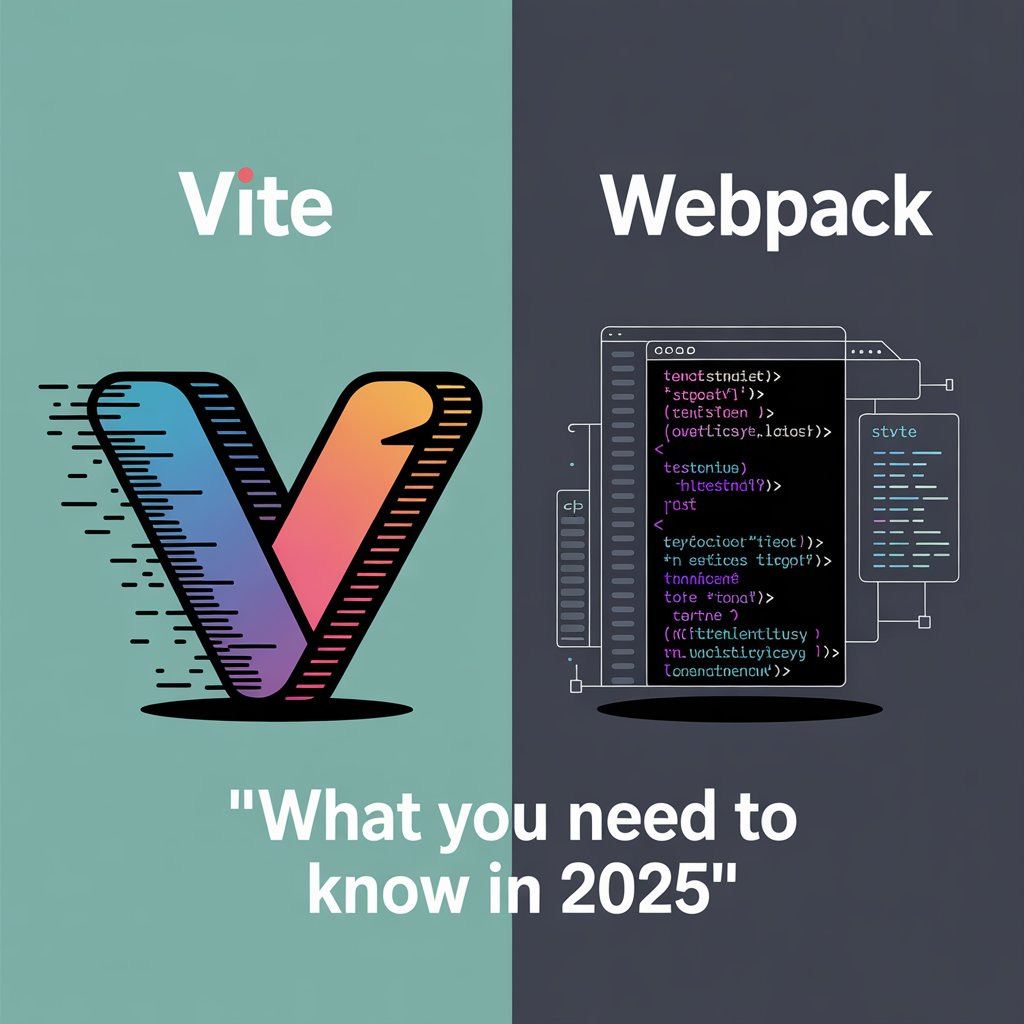Vite vs Webpack: A Guide to Choosing the Right Bundler
A Detailed Comparison of Vite and Webpack to Help You Choose the Best Bundler for Your Frontend Development Needs
In frontend development, two tools that often come up in discussions are Vite and Webpack. Both are powerful bundlers, but they approach the task of managing the development build process differently. In this guide, we’ll look at the benefits and trade-offs of each tool to help developers decide which one best fits their needs.
What Is Vite?
Vite is a modern bundler created by Evan You, the creator of Vue.js. It focuses on speed, simplicity, and a more efficient development experience. Vite uses native ES modules for development, which eliminates the need for bundling during the development process. This results in fast server start times and almost instantaneous hot module replacement (HMR).
Key Benefits of Vite:
Instant server start
Fast Hot Module Replacement (HMR)
Simple configuration
Optimized production build using Rollup
What Is Webpack?
Webpack is a widely-used bundler that has been around since 2012. Unlike Vite, which uses native ES modules, Webpack processes all dependencies and bundles them into optimized files for production. It supports complex configurations and has a rich ecosystem of plugins and loaders.
Key Benefits of Webpack:
Full support for legacy code
Extensive customization with loaders and plugins
Optimized resource handling (code splitting, tree shaking)
Compatible with almost any JavaScript framework
Comparing Development Speed
Vite excels in development speed by using native ES modules, which means it doesn’t need to bundle the entire project before starting the development server. This leads to near-instantaneous start times.
Webpack, however, requires bundling before the server starts, which can take time depending on the project size. While Webpack can be slower in terms of initial load, it’s highly configurable, which is useful for large projects with specific build requirements.
Production Builds
For production, Vite uses Rollup under the hood to create optimized bundles. Rollup is a bundler that is particularly good at tree shaking, splitting code, and optimizing assets for production.
Webpack, on the other hand, also provides excellent support for production builds, offering advanced features like code splitting and long-term caching. Webpack’s flexible configuration allows you to fine-tune each part of the build process to meet the specific needs of the project.
Configuration: Simplicity vs Flexibility
Vite embraces a "convention over configuration" approach, offering sensible defaults right out of the box. This makes it incredibly easy to set up and start developing, especially for smaller projects.
Webpack, in contrast, is extremely flexible but comes with a steeper learning curve. Its configuration can be complex and might require a lot of manual adjustments to get it working just right for a particular project. However, this flexibility is a double-edged sword: it allows developers to fine-tune every aspect of their build process.
Asset Handling and Plugins
Vite handles static assets like images and fonts more simply, allowing you to import them directly into your JavaScript. It also automatically generates URLs for these assets and optimizes them behind the scenes.
In Webpack, asset handling is more customizable, thanks to loaders and plugins. However, this flexibility requires more configuration. You need to specify how different types of files are handled, which can be both a benefit and a challenge.
Plugins: Vite vs Webpack Ecosystem
Vite’s plugin ecosystem is growing rapidly, and it is based on Rollup’s plugin system. This means many Rollup plugins are also compatible with Vite, making it easy to extend its functionality. However, its ecosystem is still smaller compared to Webpack’s, which has had many more years of development and refinement.
Webpack has a robust ecosystem with plugins for virtually every need, such as HtmlWebpackPlugin, MiniCssExtractPlugin, and TerserPlugin. The flexibility of Webpack’s plugin system allows it to be adapted to a wide variety of use cases.
Code Example: Webpack Configuration
If you choose Webpack, you’ll likely create a webpack.config.js file like this:
const path = require('path');
const HtmlWebpackPlugin = require('html-webpack-plugin');
const MiniCssExtractPlugin = require('mini-css-extract-plugin');
module.exports = {
entry: './src/index.js',
output: {
filename: '[name].[contenthash].js',
path: path.resolve(__dirname, 'dist'),
clean: true,
},
module: {
rules: [
{
test: /\.js$/,
exclude: /node_modules/,
use: 'babel-loader',
},
],
},
plugins: [
new HtmlWebpackPlugin({
template: './src/index.html',
}),
new MiniCssExtractPlugin(),
],
optimization: {
splitChunks: {
chunks: 'all',
},
},
};This config sets up a basic Webpack environment with HTML and CSS handling, as well as optimization for splitting and caching.
Code Example: Vite Configuration
Vite’s configuration is much simpler and can be defined in a vite.config.js file like this:
import { defineConfig } from 'vite';
import react from '@vitejs/plugin-react';
export default defineConfig({
plugins: [react()],
server: {
port: 5000,
},
build: {
outDir: 'build',
minify: 'terser',
},
});This configuration uses Vite’s plugin system to integrate React and provides simple setup for the server and production build.
Conclusion
Both Vite and Webpack are powerful tools that cater to different types of projects. Vite shines in development speed, simplicity, and optimized production builds with minimal configuration. It is perfect for modern projects that require fast development cycles and less complex setups.
On the other hand, Webpack provides unmatched flexibility and is ideal for large, complex applications where fine-tuned control over the build process is essential. Its broad ecosystem of plugins and extensive configuration options make it the best choice for projects that require deep customization or need to support legacy code.
Ultimately, the choice between Vite and Webpack depends on your project’s size, complexity, and the need for speed vs flexibility.


